Impact of environmental pollutants on reproduction
Keywords:
xenoendocrine disruptors, environmental pollutants, infertilityAbstract
The xenoendocrine disruptors are environmental polluters that alter the hormonal physiology of animals and humans through different mechanisms. This revision was made with the purpose of gathering recent information on chemical groups to which this effect have been demonstrated, the way they do it and the consequences in males and females in different stages of their life. The study shows that, in spite of the great quantity of experimental and epidemic studies that have been developed, they are still hypothesis waiting to be demonstrated and many compounds to be evaluated.
Author Biographies
Anastasia Cruz, Fundación Universitaria Juan de Castellanos
Giovanni Moreno, Fundación Universitaria Juan de Castellanos
References
•ANDRADE-RIBEIRO, A.L.F.A., et. al (2006). “Disruptores endocrinos: potencial problema para la salud pública y medio ambiente”. Rev Biomed V. 17. P. 146-50.
•AOYAMA, H.,et. al. (2005). A two-generation reproductive toxicity study of 2, 4-dichloropheno in rats. The Journal of Toxicological Science. V. 30 Special Issue. P. 50-78
•ARGEMI, F., et. al. (2005). Disrupción endocrina: perspectivas ambientales y salud pública. Acta Bioquímica Clínica de Latinoamérica. V.39 (3): 291-300
•BABA, T., MIMURA, J., et. al. (2005). Intrinsic Function of the Aryl Hydrocarbon (Dioxin) Receptor as a Key Factor in Female Reproduction. Mol Cell Biol. V. 25(22): 1004010051
•BELLO, V.J.F., et. al. (2001). “Efecto de los disruptores xenoendocrinos de origen ambiental en la fertilidad del macho”. Trabajo de Grado para obtener el título de Médico Veterinario. Universidad de Ciencias Aplicadas y Ambientales, UDCA. Programa de Medicina Veterinaria, Bogotá, Colombia.
•CRUZ, C.A.C. (2006). “Efecto de los disruptores xenoendocrinos en la fertilidad de los machos”. Ponencia en el XIII Encuentro del Ateneo, septiembre. Memorias. Universidad Pedagógica y Tecnológica de Colombia, Tunja.
•EMOKPAE, M.A., et. al. (2006). “Hormonal abnormalities in azoospermic men in Kano, Northern Nigeria Indian”. J Med Res. V. 124. p. 299-304
•HOMBACH-KLONISH, S., et. al. (2006). Dioxin Exerts Anti-estrogenic Actions in a Novel Dioxin-Responsive Telomerase-Immortalized Epithelial Cell Line of the Porcine Oviduct (TERT-OPEC) Toxicological Sciences v. 90(2):519-528
•HONG, E., et. al. (2006). Identification of estrogen-regulated genes by microarray analysis of the uterus of immature rats exposed to endocrine disrupting chemicals. Reproductive Biology and Endocrinology. V. 4(49). Disponible en http://www.rbej.com/content/4/1/49. febrero 2007
•HOSHINO, N., et. al. (2005). A two-generation reproductive toxicity study of benzophenone in rats. The Journal of Toxicological Science. V. 30 Special Issue. P. 5-20
•IZUM, H., et. al. (2005). A two-generation reproductive toxicity study of n-butilenzeno en rats. The Journal of Toxicological Science. V. 30 Special Issue. P. 21-38
•JAGER, C., et. al. (2006). “Reduced seminal parameters associated with environmental DDT exposure and p,p'-DDE concentrations in men in Chiapas, Mexico: A cross-sectional study”. Journal of Andrology, Vol. 27 (1): 16-27
•LYONS, G. (2006). “Viewpoint: policy requirements for protecting wildlife from endocrine disruptors”. Environmental Health Perspectives. Suppl 1 V. 114. P. 142-146
•MASTANDREA, C., et. al. (2005). Hidrocarburos aromáticos policíclicos. Riesgos para la salud y marcadores biológicos. Acta Bioquím. Clín. Latinoam., V.39 (1): 27-36
•MATSUURA, I., et. al. (2005). Evaluation of a two-generationr reproduction toxicity study adding endopoints to detect endocrine disrupting activity using vinclozolin. The Journal of Toxicological Science. V. 30, special issue. P. 163-188
•MORALES, C.A., RODRÍGUEZ, N.. (2004). “El Clorpirifos: posible disruptor endocrino en bovinos de leche”. Rev Col Cienc Pec Vol. 17 (3): 255-266
•OLEA, N., et. al. (2002). “Perspectivas en disrupción endocrina”. Gac Sanit 16(3):250-256
•QUEIROZ, E. K. R. de, WAISSMANN, W. (2006). “Occupational exposure and effects on the male reproductive system”. Cad. Saúde Pública. V. 22 (3): 485-493
•SANTAMARIA, J. (2007). “Nuestro futuro robado. La amenaza de los disruptores endócrinos”
•Eco Portal.net Disponible en http://www.nodo50org/wordwatch
•SONEDA, S., et. al. (2005). Association of micropenis with pro185Ala polimorphism of the gene for aryl hydrocarbon receptor repressor involved in dioxin signaling. Endocrine Journal. V. 52 (1): 83 88
•SONNENSCHEINN, C., SOTO, A.M.. (1998). An updated review of environmental estrogen and androgen mimics and antagonist. Journal of Steroid Biochemical Molecular Biology. Vol. 65. P. 143-150
•SOTO, A.M., SONNESCHEIN, C.(2002). Editorial: “Disruptores endocrinos, una historia muy personal y con múltiples personalidades”. Gaceta Sanitaria. V. 16 (3): 209-211
•VINGGAARD, A.M., et. al. (1999).Rapid and sensitive reporter gene assays for detection of antiandrogenic and estrogenic effects of environmental chemicals.Toxicology and Applied Pharmacology. V. 155. P. 150 - 160
•WANG, S-L., et. al. (2006). Body Burdens of polychlorinated dibenzo-p-dioxins, dibenzofurans, and biphenyls and their relations to estrogen metabolism in pregnant women. Environ Health Perspect. V. 114(5): 740745.
•YAMANO, Y., et. al. (2005). A novel spermatogenesis related factor-2 (SRF-2) gene expresión affected by TCDD treatment. Endocrine Journal. Vol. 52 (1): 75-81




